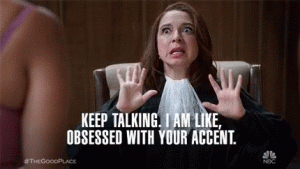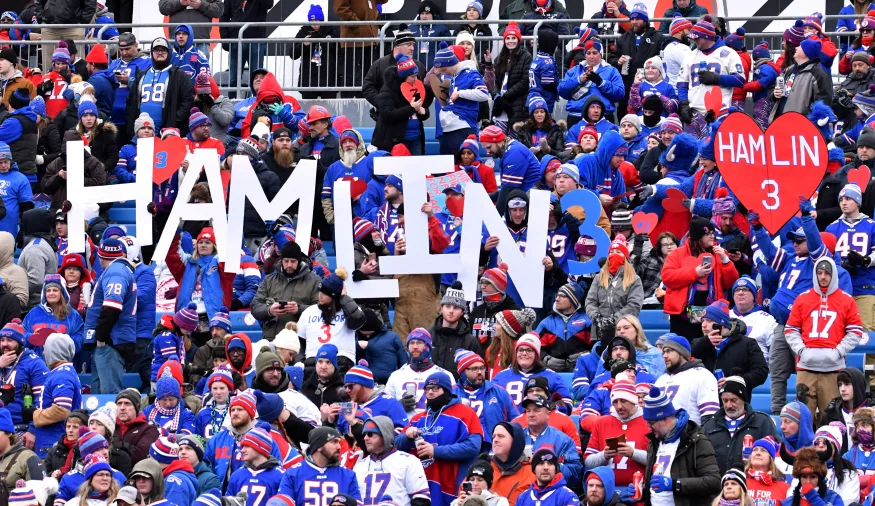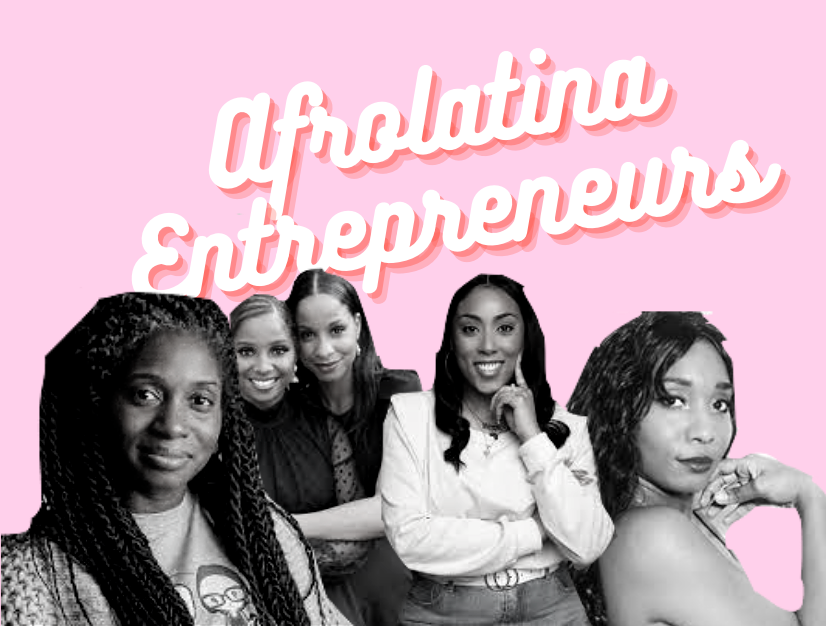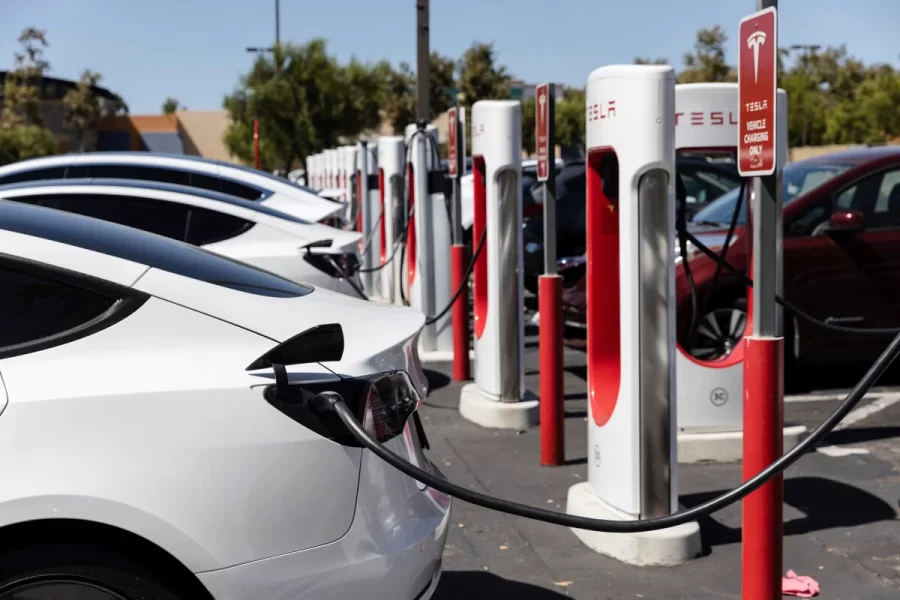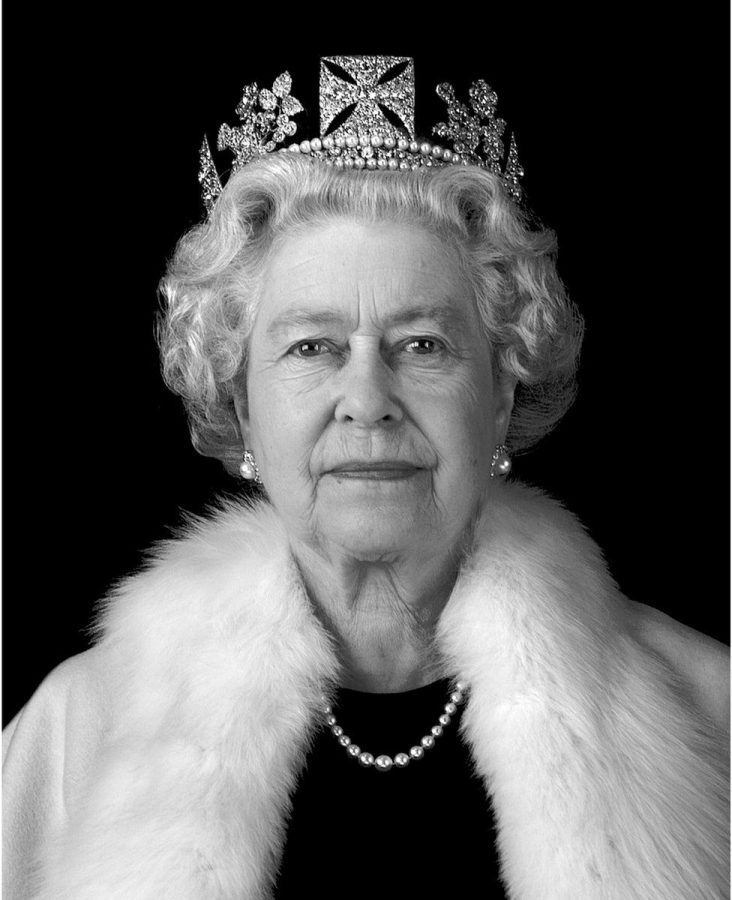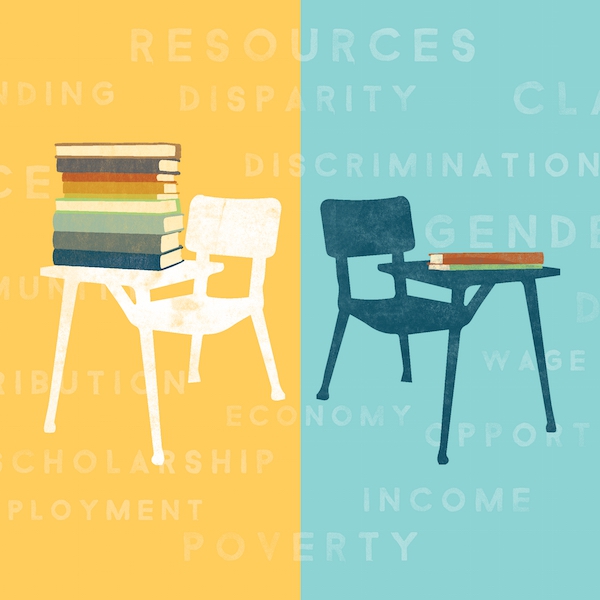
When examining statistics on Minnesota Education, the data can be misleading. According to a study in 2019, Minnesota Education ranks highly, ranked 7th place nationally on the quality of education and the 2nd highest state for math test scores. However, while many statistics show public schools in Minnesota having a high level of achievement, the discrepancies between schools within Minnesota are alarming.
According to the US Department of Education, in 2019, Minnesota ranked 50th when it comes to racial disparities in high school graduation rates with a national gap of 11% compared to the Minnesota gap of an alarming 23%, more than twice the national percentage. These disparities and inequities which are prevalent within the Minnesota education system stem from several factors including systematic and institutional racism, furthered by a lack of representation among teachers and educators, Eurocentric Curriculum, implicit bias, and socioeconomic inequities. This issue has been deemed the “opportunity gap,” as it refers to the fact that inadequate resources and lack of access to a high-quality education result in inequitable opportunities for some young students while withholding the same outcomes for other students, often relating to race.
When students have equitable access and opportunities, there is no doubt that they can find success and growth. In working to create a more inclusive and equitable educational system, we can better serve our young people by allowing them to have opportunities to reach their full potential and prepare them to go into the world as well-rounded individuals. As a future educator, I have found this topic to be of the utmost importance for me to challenge myself to be an educator who creates an equitable classroom environment which, through my research and composition of this paper, I have been able to learn how to do.
As Irish poet William Butler Yeats said, “Education is not the filling of a pail but an igniting of a fire.” The influence of teachers on the lives of students is insurmountable. Educators are entrusted with the responsibility of preparing young people for the future and helping them reach their fullest potential. This is why the following statistic is so problematic: of all students in Minnesota, 35 percent are students of color or indigenous students. However, only 5 percent of teachers in Minnesota identify as a person of color. Representation matters in all aspects of life, especially when it comes to teachers. Several studies have expressed that when students have teachers who reflect their own experiences and/or identities, there is greater student achievement. Two Minnesota legislature bills known as the “Increase in Teachers of Color Acts” have been proposed in both the Senate and the House (Senate Bill SF 446 and House Bill HF 217) and would address the issue by hiring more educators of color utilizing hiring bonuses, grants, and other methods. The bills address the importance of teacher retention as well as new approaches towards teacher training and treatment.
Inequities amongst the qualities of educators are also a significant source of disparities in the quality of education received. In fact, the U.S. Department of Education found that in schools with the highest enrollments of students of color, it is less likely that the school will be equipped with the most qualified and most effective teaching staff. In other words, these schools are less likely to have faculty and staff who have received a higher degree and have received sufficient training. It is integral that students have teachers who are engaged and educated on how to be efficacious in their roles.
Teachers also have an important role to play in motivating students and setting high expectations and learning standards for all of their students, regardless of race. This, however, has not always been true as shown in a study conducted by Kent Harber, Jamie Gorman, and other educational psychologists that shows students of color are provided with feedback from teachers that are less rigorous compared to their white classmates. Holding students to a higher level of expectation and achievement allows for them to be motivated to reach their potential rather than settling for subpar because a teacher didn’t have the same belief in their capability compared to another student. Educators play a critical role in the lives of young people which is why investing in hiring educators who can reflect the diverse communities we live in and who are qualified, motivated, and engaged is also a direct investment in the futures of young people. Being able to push students to their fullest potential by having high expectations of them and making thoughtful connections with them is invaluable in their lives because, in the words of Paule Reville, director of the Education Redesign Lab at the Harvard Graduate School of Education, “If you lose the connection, you lose the kid.”
One of the ways in which racial bias is perpetuated, both consciously and unconsciously, is through curriculum and pedagogy which are based around Western ideas, falling under the category of Eurocentric. Too often do we see United States History textbooks that go into heavy detail on the supposed triumphs of white colonizers while only briefly, if at all, discussing the experiences and culture of indigenous and people of color. Eurocentric curriculum extends beyond history classes as well, as mentioned in a study conducted on subject areas diversity states, “that additional academic domains such as the natural sciences and English also promote a Eurocentric ideological focus” (Solano-Flores & Nelson-Barber, 2001). It is important to recognize that just as our political system in the United States was founded on the ideas of imperialism and white supremacy, so too are educational institutions. Ms. Jessica Davis speaks on the issue saying, “If you can’t center the experience of all human beings and see why it’s important to have all perspectives represented so we truly get a full picture of the whole truth, then you are perpetuating the status quo of white dominance because you only want your story to be told.” As previously mentioned, representation matters in order to be more informed and culturally-aware of the diverse populations around us. Stories of ancestry and history present opportunities for appreciation of others and in order to create a more equitable educational system, we must learn to unlearn the notion of white dominance and superiority.
Disparities in education can also be seen through disciplinary discrepancies due to implicit bias, contributing to what is known as the school-to-prison pipeline. Implicit bias refers to the unconscious bias, oftentimes racial biases, which have been ingrained in people due to the systemic racism which has existed for so long in our society. Ms. Jessica Davis, 2019 Minnesota Teacher of the Year and Racial Equity Instructor Coach for St. Louis Park School District, speaks on the importance of educators being aware of their own biases saying, “If we understand who we are as racialized beings and that our experiences are dependent on our race because of this social construct and we can make room for all of those perspectives, we will have a greater awareness and a fuller picture.” These biases, for example, play a role in how some people view students of color as more disruptive or more apt to be troublemakers, a stereotype that inaccurately paints a picture of students of color.
The data shows that in Minneapolis Public Schools, according to the U.S. Department of Education, black students make up about 40% of the student enrollment but were the subject of 74% of the district’s recorded disciplinary incidents and 69% of the referrals to law enforcement. Studies also show that students of color are subjected to harsher disciplinary measures such as suspensions, as opposed to white students.. Suspensions are also used more frequently as discipline for students of color which presents itself to be harmful because oftentimes students who are suspended have a difficult time catching up with what they missed. This, in turn, can contribute to the gap in graduation rates. A 2020 study conducted at Hamline University shows that in Minnesota, only 58 percent of black students and 59 percent of Hispanic students graduate on time. Implicit bias and discrepancies with the severity of discipline based on racial biases have extreme consequences in the education of young people, an issue needed to be combated in order to provide more equitable educational opportunities. Simply put, students need to know that they will be held accountable for their actions, rather than based on their race, and educators and administrators need to be aware of implicit bias in order to create a safe place for all students.
Another reason behind disparities in education is due to disproportionate funding and a lack of access to important resources including academic rigor within curriculum and class selection. Due to racial wealth gaps in Minnesota and throughout the United States, disparities in the quality of educational facilities, access to technology, and access to advanced courses can be seen as the funding for public schools are derived from the property taxes of the surrounding district. Therefore, predominantly white school districts tend to have a larger amount of funding than districts that serve predominantly students of color. However, this difference is more than significant. A 2019 study conducted by EdBuild found that predominantly white school districts got $23 billion more than schools with more students of color but the same number of students. When districts don’t have a large enough budget to work with, they are unable to provide students with options to take courses that will challenge them more such as advanced placement courses, as seen in the same data from EdBuild. Districts that serve low-income neighborhoods are also unable to provide students with the same quality of technology, college preparatory work, summer learning programs, and other resources which are being provided to higher-income districts, widening the gap even further. While some people argue that it is only fair that children who come from a higher median income deserve the higher quality of education more so than those who come from lower median incomes, being deprived of a sufficient, quality education simply perpetuates the cycle of poverty because it is far more difficult to get a high-paying job in order to live in a higher-income neighborhood when not given the opportunity to do so.
Because education inequity intersects with many other social justice issues including poverty, hunger, lack of access to affordable housing, and the unequal distribution of wealth, the issue of solving such inequities is complex but certainly not impossible. Various pieces of legislation show promising opportunities for progress. A bill proposed by the Minnesota House of Representatives calls for an amendment to be made to the state’s constitution. The purpose of the bill is to provide more uniformity among districts and schools in order to lessen the discrepancies in resources and funding which has proven to be unequal in the past. The amendment states that “all children have a fundamental right to a quality public education that fully prepares them with the skills necessary for participation in the economy, our democracy, and society” (Minnesota Legislature). While the proposal has not been passed in the state legislature, the bipartisan bill has support from both Democrats and Republicans. Additionally, various independent organizations in Minnesota have been working to tackle educational inequities, one of which being Black Men Teach. The nonprofit, founded in Minnesota, is working to directly combat the issue of representation among educators, specifically, black male teachers by recruiting, training, and retaining black men to become educators and mentors.
Ultimately, when it comes to fixing the injustices of educational inequity, it comes down to making conscious efforts to expand our understanding of ourselves, our prejudices and our biases, to truly make change within the system. We cannot become a truly equitable society while upholding the inequitable education system of today. Because we as people make up the educational system, and if we work to create better representation within educators, decolonize our Eurocentric curriculum, eliminate implicit biases’ role in discipline, and allocate funds more equally among districts, greatly needed change can happen. It is our duty and our responsibility to advocate for the future of our world by providing each young person with a quality education. Education is a human right. We would be doing a disservice to all by allowing inequitable educational practices to remain.
Works Cited
Albright, Susan. “Education Equity: What’s Ailing Minnesota?” MinnPost, 5 Mar. 2021, www.minnpost.com/community-voices/2021/03/education-equity-whats-ailing-minnesota/.
“Civil Rights Data Collection (CRDC) for the 2013-14 School Year.” U.S. Department of Education , 24 Mar. 2021, www2.ed.gov/about/offices/list/ocr/docs/crdc-2013-14.html.
Derrick Miedaner, Minnesota Reformer February 27. “Education Amendment Highlights Racial Disparities: A Look at the Data.” Minnesota Reformer, 13 Apr. 2020, minnesotareformer.com/2020/02/27/education-amendment-highlights-racial-disparities-a-look-at-the-data/.
Governor’s Office . A Roadmap for Transformational Change in Minnesota Education: Governor’s Education Roundtable , 2020.
Grunewald, Rob, et al. “Minnesota’s Education System Shows Persistent Opportunity Gaps by Race.” Federal Reserve Bank of Minneapolis, 2021, https://www.minneapolisfed.org/article/2021/minnesotas-education-system-shows-persistent-opportunity-gaps-by-race.
Harber, K. D., Gorman, J. L., Gengaro, F. P., Butisingh, S., Tsang, W., & Ouellette, R. (2012). Students’ Race and Teachers’ Social Support Affect the Positive Feedback Bias in Public Schools. Journal of Educational Psychology, 104(4), 1149–1161.
“HF 874.” HF 874 as Introduced – 92nd Legislature (2021 – 2022), Office of the Revisor of Statutes , 2021, www.revisor.mn.gov/bills/text.php?session=ls92&number=HF874&session_number=0&session_year=2021&version=list.
“House Select Committee on Racial Justice Report to the Legislature .” Minnesota Legislature, 22 Dec. 2020, www.house.leg.state.mn.us/comm/docs/tElVeP6cVEaYSyh0-o0utQ.pdf.
“JL Minneapolis.” Addressing the Achievement Gap – JL Minneapolis, www.jlminneapolis.org/strategic-plan/focus-area/.
Loewen, J. W. (2007). Lies my teacher told me: Everything your American history textbook got wrong. New York: Touchstone.
Lynch, Robert. “The Economic and Fiscal Consequences of Improving U.S. Educational Outcomes.” Equitable Growth, Washington Center for Equitable Growth, 2015, equitablegrowth.org/achievement-gap/.
McCann, Adam. “2021’s States with the Best & Worst School Systems.” WalletHub, 2021, wallethub.com/edu/e/states-with-the-best-schools/5335.
Prather, Shannon. “Erasing the Achievement Gap.” Hamline University, 2020, www.hamline.edu/HUNewsDetail.aspx?id=4295013229.
Quinlan, Casey. “How Racial Bias Affects the Quality of Black Students’ Education.” ThinkProgress, 18 July 2016, thinkprogress.org/how-racial-bias-affects-the-quality-of-black-students-education-642f4721fc84/.
Solano-Flores, G., & Nelson-Barber, S. (2001). On the cultural validity of science assessments. Journal of Research in Science Teaching: The Official Journal of the National Association for Research in Science Teaching, 38(5), 553- 573.






